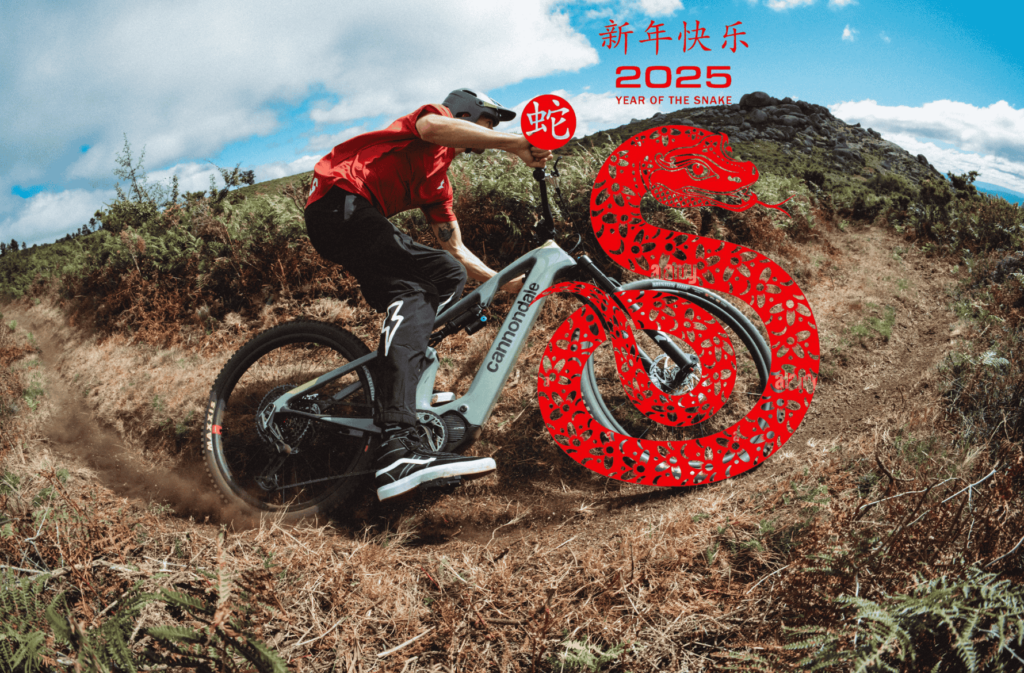You might be thinking, “Well he is a month and a half late on his forward-looking, start-of-the-new-year story.” I’ll grant you that, while gripped by a mid-winter malaise, unable to ride outside, and feeling generally uninspired, I didn’t bother writing the obvious story we all expect as a new year starts.
But maybe it’s all part of a grander plan. Consider this: Tons of e-bikes and e-bike components are produced in China. Wouldn’t it be a bit presumptuous if not downright colonialist to apply the Gregorian calendar to a culture operating on a different system?
So, it makes perfect sense that, in the wake of Chinese New Year, I finally give the people what they want: Some off-the cuff predictions and musings on e-MTB technology in the Year of the Snake.
Bigger Batteries for Lightweight Motors
As is the case with any electric motorized vehicle, range anxiety is a thing. Sometimes, with e-MTBs, it’s a resigned, “Well I know I can only get about two hours out of this thing,” sentiment. Other times, people like myself specifically opt for full-power e-MTBs because we don’t want to deal with range extenders or small batteries on the lil’ bikes.
Trek’s Slash+ is a nice example of a different concept, one I hope other manufacturers will begin to adopt. Pair a 50nm TQ motor with a 580w battery, and you’ve got just enough pedal assist for the climbs with plenty of range for longer days.
As I’ve said before, it’s not that I want or need an 80nm motor. I just need the big battery that’s typically paired with such a drive unit.
Something — Anything — From Specialized
What with the bike industry’s low-key self-implosion over the past couple of years, we’ve certainly seen fewer new bike launches than usual. Understandable. But it gets to a point where the absence of a new bike from one of the biggest brands becomes quite conspicuous.
Say, can you remember the last time Specialized launched a new Levo e-MTB? No, not the sorta-new Levo SL that came out last fall. I mean a Levo Levo. An honest-to-God full-powered Specialized e-MTB.
It’s been ages. I have to think that a fresh version of this proven platform will come out this year. Maybe they’ll even find some ways to wow us with the motor and battery.
It Keeps Getting Harder to Say “Lightweight”
The so-called “Lightweight” drive units are getting more and more powerful every year, like Sauron when he senses the presence of the Ring of Power as it gets closer to Mordor. When are we going to reach a point where it’s simply a spectrum between less-powerful e-bike motors and more powerful motors?
For example, Bosch’s Performance Line SX drive unit produces 55nm. Fazua’s Ride 60 is a 60nm motor. It’s not quite the 85-ish Nm of torque that most full-power motors produce, but it is starting to get close.
I think it would be far more intuitive if we moved away from the lightweight vs. full power dichotomy and just had a range of e-bike options for different applications. The motors, batteries, suspension, and other components adjust to meet the need, and we don’t stress about what it actually means to be a “lightweight” e-bike.
A Fifth Section Because 4 Is the Number of Death
In keeping with our theme, I want to avoid the pitfall of the number four, as it is considered unlucky in Chinese numerology. So, hmm what now?
OK, e-bike displays. The new DJI system is touch-screen. Face it, pretty much everything is heading that direction. Who’s next to introduce touch-screen tech to their system? Bosch? Shimano? Specialized?
That’s kind of boring. How about suspension design? Santa Cruz went away from their iconic VPP design in their new Vala. Yeti tweaked its suspension for the 160E. I have to think that more brands will do ground-up redesigns to build bikes around e-bike systems, not the other way around.
Is that enough? Electronic shifting integration? Wait, we already have that. AI coaching integrated into the display? Ew, no thank you. Bespoke handmade motors for The Radavist set? Unlikely.
Whatever happens in this slithery year to be, I’ll do my best to write about it.
